- X
- Tumblr
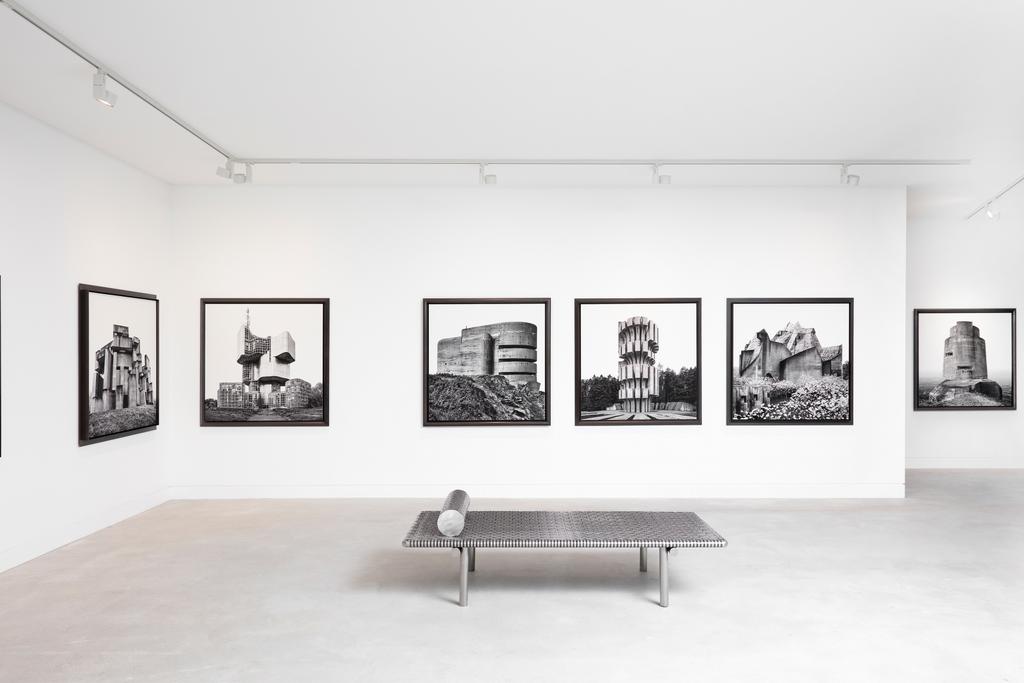
A tribute to neglected Brutalist structures scattered across the globe, structures that Cameron notes have been “stripped of purpose and isolated from the present, [and] are literally sinking, eroding or being assimilated into the terrain on which they were built.”

Cameron, an Australian director, designer and visual artist, whose work as a director of music videos for the likes of Pet Shop Boys, Garbage and Blur has earned him a spot in the archive of the permanent collection of the British Film Institute, became aware of these structures and their erosion during his time in London, the home of Brutalism.
“Studying design in London, we were taught of the common creative process-that of enquiry and how it can be applied across mediums,” Cameron tells Vogue Living of the breadth of his output. “I never wanted to be limited by medium as you can explore, learn and say different things in different mediums. My practice is more accumulative.”

Don Cameron, Guernsey, Communion 2002-2020, Edition 5 + 2AP, Dimensions Framed 1320mm x 1320mm x 60mm, Print Archival pigment print on cotton art rag
The series of nine images, which Cameron notes were edited down and handpicked to sit alongside one another “based on their inter-relationship, sculptural quality, and strange beauty”, have not only captivated and inspired the artist for some 20 years but have driven him across the globe in what he describes as an almost “ritualistic” need to collect and catalogue these buildings.
“I’ve always had an element of my practice as a kind of open narrative within which I can participate,” says Cameron, adding, “the act of researching, casting, then travelling to these often far flung and remote locations to experience the feeling of being before them became a ritual. An action of collecting.”

“Like totems or silent sentinels that mark the earth’s littoral—where land, sea and sky merge, they stare outward at the infinite,” Cameron says of these structures which can be found in obscure locations like Bosnia and Herzegovina’s Kozara Mountain or on the Channel Islands.
Cameron continues: “I have always been inspired by the obscure, marginal and aberrant. As with music, when you feel you have discovered something great, then you listen to something that touches you more profoundly; it’s incredible these structures exist. The only reason they endure is because they are impossible to destroy.”
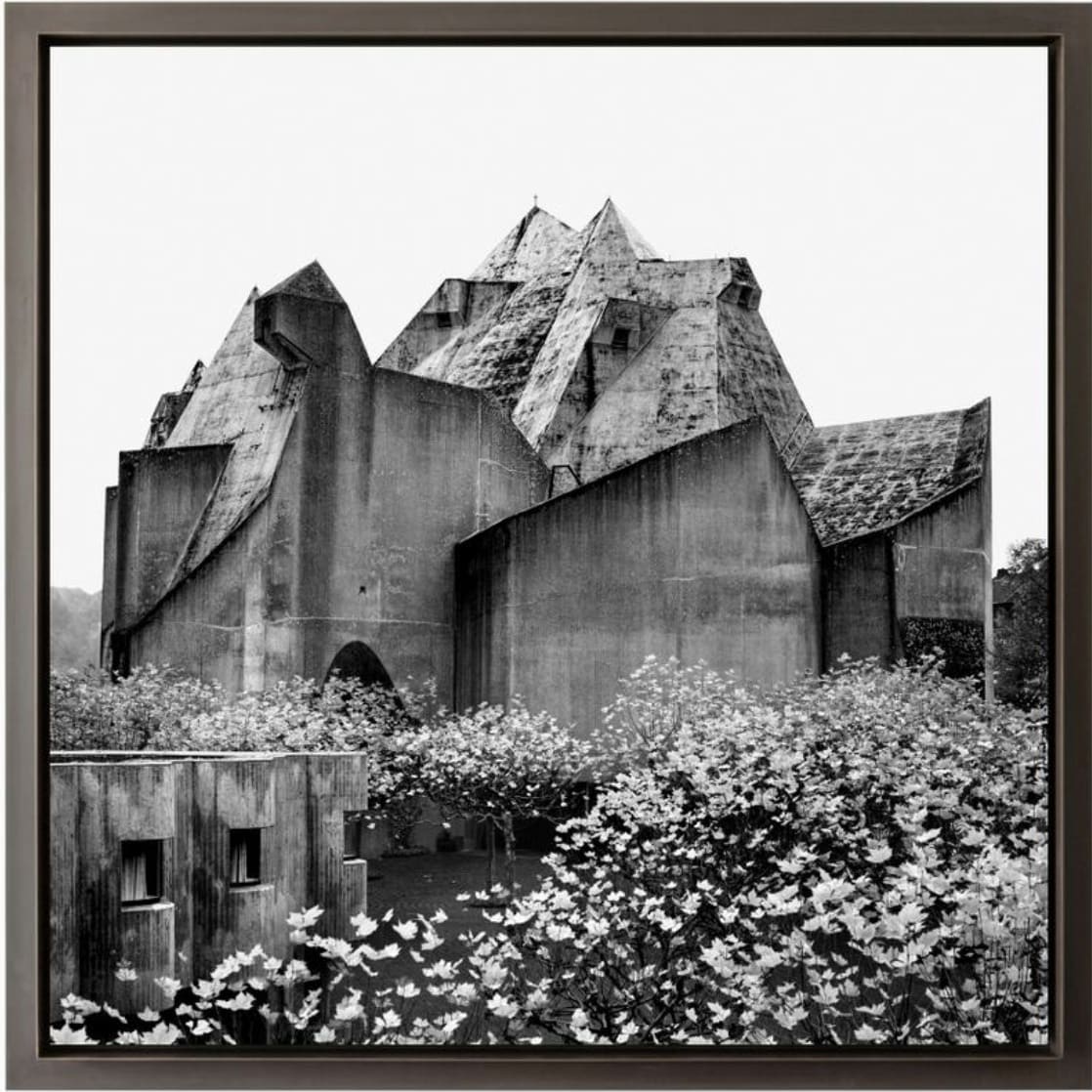
Don Cameron, Neviges, Communion 2002-2020, Edition 5 + 2AP, Dimensions Framed 1320mm x 1320mm x 60mm, Print Archival pigment print on cotton art rag
“Rising like abstract, impossible and inhospitable mountains from the earth, what is so paradoxical about these seemingly enduring, almost indestructible buildings is their purpose. Designed as churches (Vienna’s Wotruba Church by Cubist sculptor Fritz Wotruba and Neviges’s Pilgrimage Church by Gottfried Böhm), bunkers and spomeniks (Balkan monuments erected in tribute to the lives lost and battles fought during World War II).
That these traditionally safe, welcoming structures were created through the Brutalist lens and cast from concrete speaks to the collective mindset of the world in which they were conceived; and, undoubtedly, reinforce the paradoxical nature of these buildings, which sit as unmovable reminders of our history, yet are places of communion, protection, salvation and healing.”
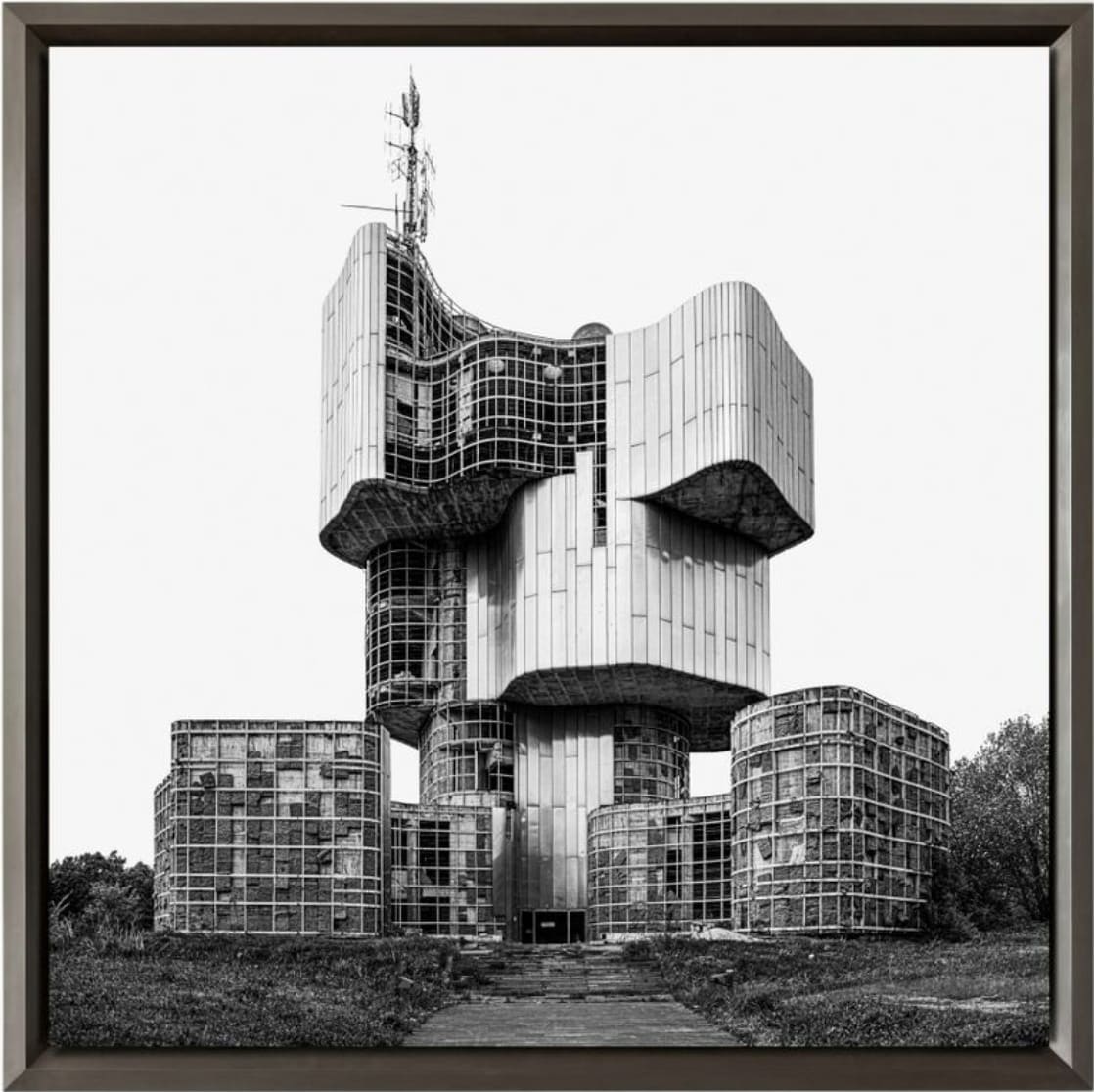
Don Cameron, Petrova Gora, Communion 2002-2020, Edition 5 + 2AP, Dimensions Framed 1320mm x 1320mm x 60mm, Print Archival pigment print on cotton art rag
“The unique characteristics of these primitive structures or survival machines also represent the last form of static defense,” says Cameron. “Their foundation-less mass is not grounded in the earth, but centred upon itself, independent, capable of movement and articulation to sustain the focus of its occupants under extreme conditions.”
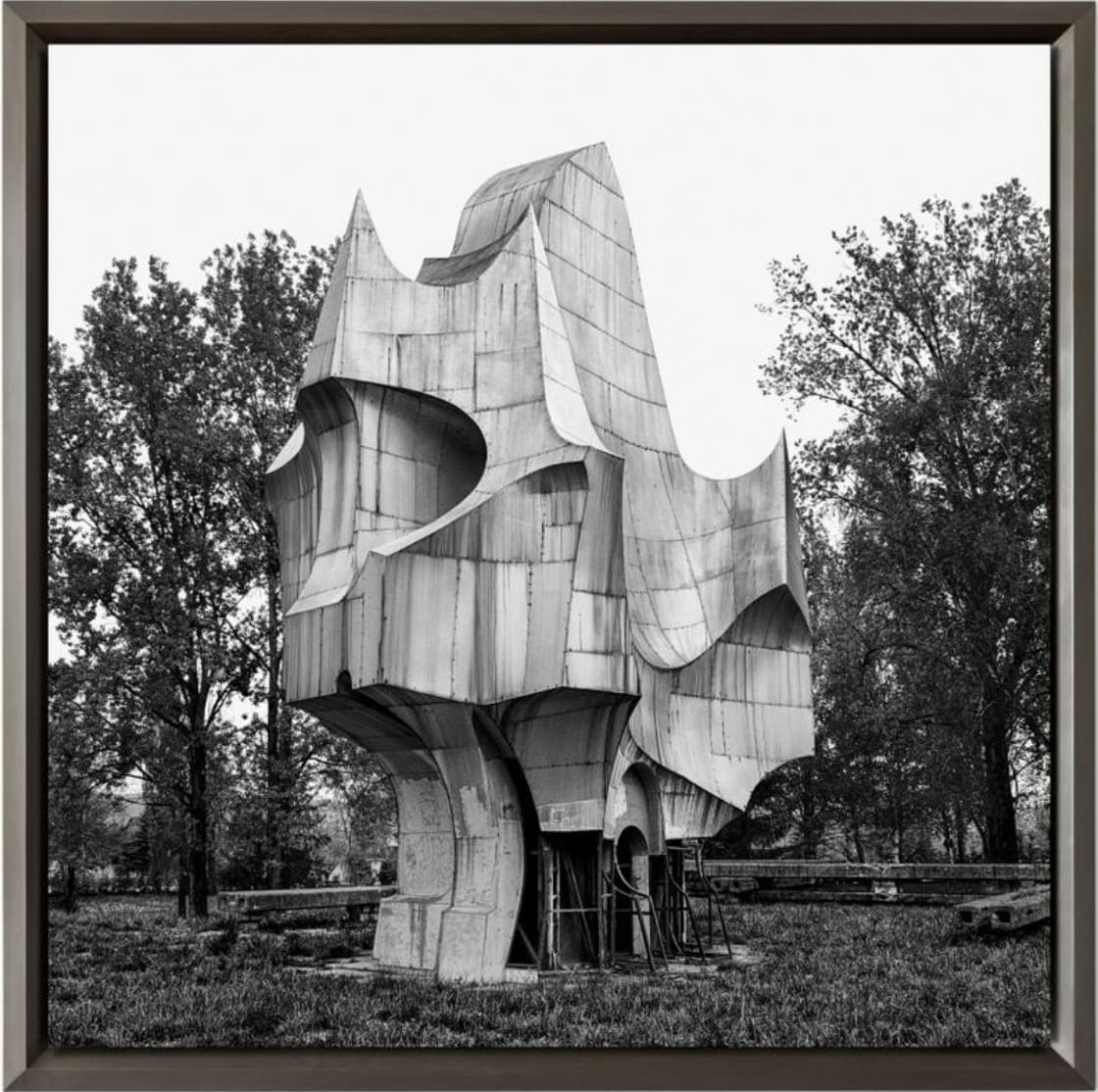
Don Cameron, Sanski Most, Communion 2002-2020, Edition 5 + 2AP, Dimensions Framed 1320mm x 1320mm x 60mm, Print Archival pigment print on cotton art rag
When quizzed on his favourite Brutalist structure Cameron quips “Belgium does brutalism best”, but it’s the quirky Casa Sperimentale in Rome that he acknowledges as his favoured structure. “I went to the outskirts of Rome last year to the coastal town of Fregene, made famous by Fellini for sequences he filmed there for Juliet of the Spirits. In the Fregene pine forest is built ‘Casa Sperimentale’ designed by Guiseppe Perugini intended as a villa for weekend occupation,” the artist explains.
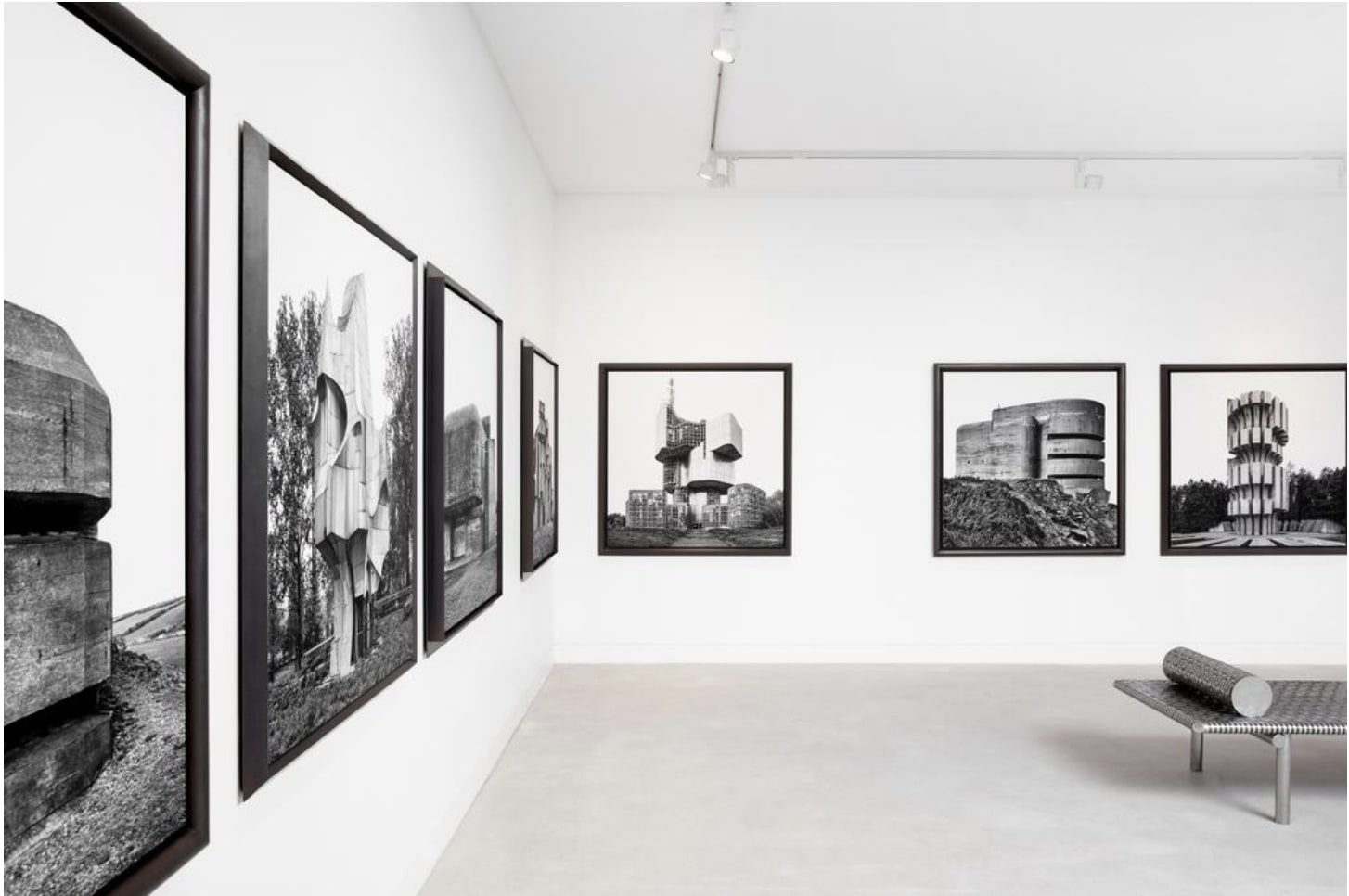
Next for Cameron? “Currently I am designing the interiors for a house in Parsley Bay and for a former Victorian country retreat in Cattai, NSW.” Homes which we hope to glimpse sooner rather than later considering Cameron’s oeuvre, which includes Canberra’s Hotel Hotel project.
Don Cameron’s Communion is showing at Gallery Sally Dan-Cuthbert until August 30.


